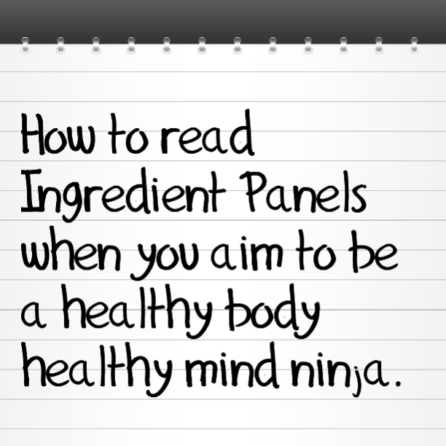ingredients panels – how to cut through the jargon to make delicious choices
We all understand the need and benefits of having a nutritious diet for ourselves and are keen to give our children the best start in life. Unfortunately, between conflicting research – think about the debate on red meat, diet fads that become nutrition urban myths; such as fruit is too high in sugar and food industry who profit from placing nutrition jargon on packages like ‘natural’ and ‘high protein’, it can be easy to get yourself in a tailspin.
The answer lies in being able to understand what we are eating and whether or not it follows the golden rule – just eat real food in moderation and reading labels can be a simple way to achieve this.
Reading Ingredients Panels
Identifying if the item has a nutrition label is actually your first clue in the process. Generally, the foods in your supermarket that don’t have a label at all will be the healthiest – think apples, chicken, broccoli, spinach, dried lentils etc. If it looks like did when it was growing on a tree or in a field, then you are eating a ‘real food’.
In Australia the ingredients listing on foods should be in order of the largest component of the item to the smallest. So, for example, if sugar is the first item listed, this indicates it is the primary ingredient in the food. If sugar is 8th out of 9 ingredients, then there is likely a small amount in there.
Once you have read the label, ask yourself a few questions about the ingredients
Can I understand what all of the ingredients are? ie. do I know what high fructose corn syrup is or how its made?
Are they in their whole form? ie high fructose corn syrup versus corn. The more mumbo jumbo in the ingredients listing, the more processing it has endured.
Does this ingredient make sense in this item? Ie. Sugar added to already sweet fruit juice is unnecessary.
Does it list preservatives, additives, colourings etc? ie. does it feature numbers like ‘sweetener 951’.
Now begin to make your choice by asking yourself
Is this the best option available? Could you pick another brand that has simpler ingredients?
If not could I make it myself? Think homemade muffins or muesli bars.
Could I find an alternative option? Maybe fresh OJ instead of green cordial?
The basis of a healthy diet is eating mostly fresh, minimally processed, simple foods. Whilst many preservatives, sweeteners and filler products have been researched and found to be ‘fit for human consumption’, these ingredients should not feature largely in a whole food diet as they tend to give little or no nutritional benefit and in some cases cause reactions, deficiency or unwanted side effects.
Reading the ingredients labels on your food and using your common sense is at the heart of helping your family to get the nutrition they need for rest and play.
With gratitude,
Emma (Nutritionist)
Call us now to book in or have a chat with our fabulous Nutritionist Emma!
9530 5536 || hello@theacupuncturecompany.com.au

